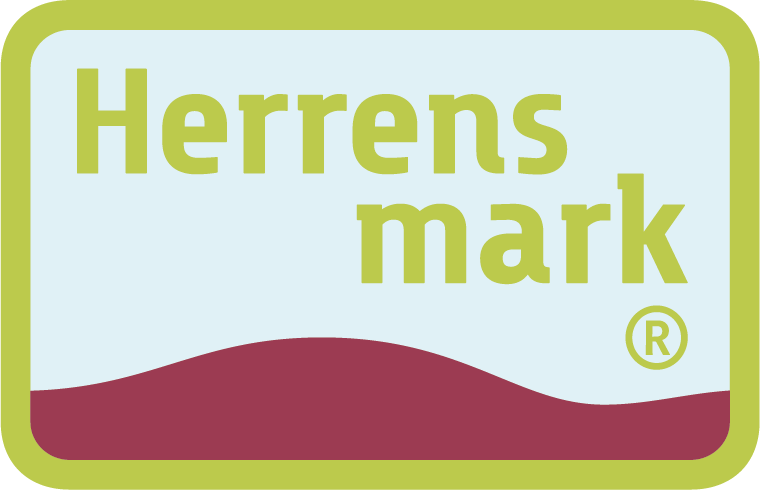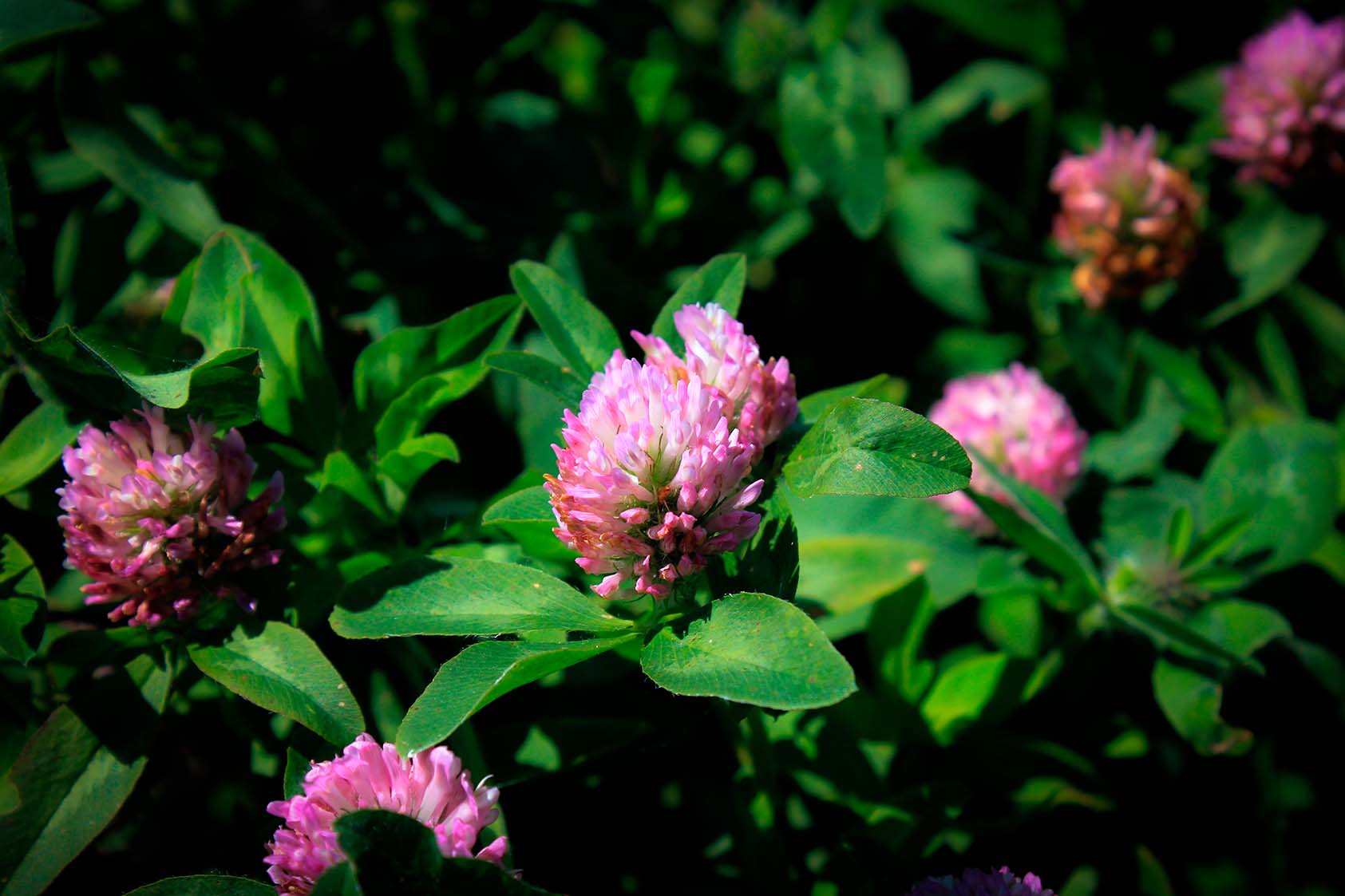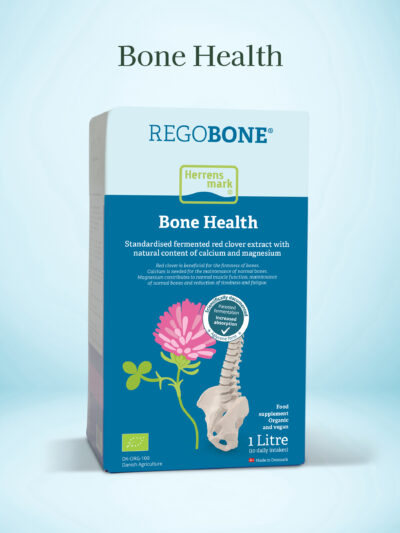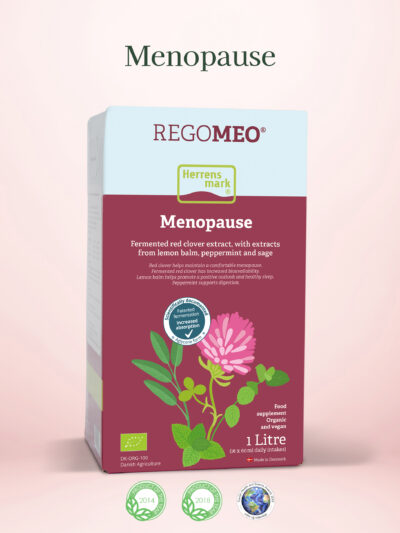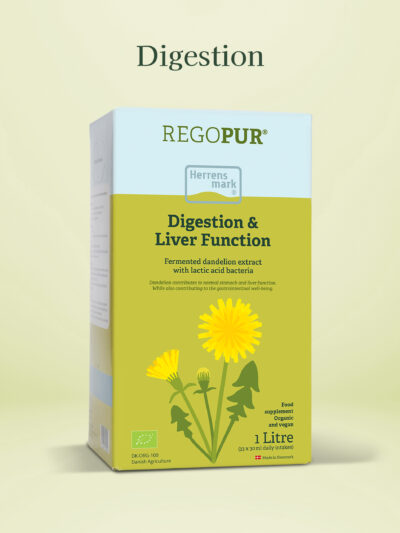Are you worried that there may be side-effects from taking red clover or red clover extract as a treatment for menopausal symptoms? There is no need to be. Provided you are in a good state of health, there are no recorded or known side-effects from taking red clover, even in the form of the fermented extract we use in Herrens Mark REGOMEO and REGOBONE.
Red clover contains phytoestrogens
It can be prudent to bring up the possibility of side-effects when using red clover because it naturally contains plant oestrogens called phytoestrogens. Phytoestrogens are also known as isoflavones. They are present in plants like red clover, soya and beans. Phytoestrogens from red clover are what make it an interesting proposition in relation to the discomforts experienced by some women during the menopause, such as hot flushes, sweats, reduced energy levels and insomnia. Red clover has been associated with the menopause for many years. The isoflavones it contains can help to make the menopause a calmer and less unpleasant process by alleviating some of the known symptoms. This is because the isoflavones can balance the natural declines in oestrogen production that occurs during and after the menopause.
Oestrogen vs. phytoestrogen
The level of oestrogen in a woman’s body decreases as she enters the menopause. This reduced quantity of oestrogen may affect both body and mood. Red clover’s content of phytoestrogens (or isoflavones) is interesting in this context because they have a structure that resembles oestrogen. The oestrogen hormone binds to different receptors than phytoestrogens. Phytoestrogens bind to so-called beta receptors, which are located around the bones, kidneys and lungs while oestrogen binds to so-called alpha receptors, which are found in large concentrations around the breast and uterus. So far, no side-effects have been experienced from the use of phytoestrogens as a treatment for female menopausal symptoms.
Phytoestrogens and safety
A lot of people are wary of hormones or oestrogen. Provided you are otherwise healthy, there is no need to worry about the phytoestrogens found in red clover. In 2015, The European Food Safety Authority (EFSA) performed the most comprehensive safety assessment of phytoestrogens (isoflavones) to date. In its report, the EFSA confirms that there is no risk for women who take doses of up to 150 mg isoflavone daily. If you would like to find out more about the report from the European Food Safety Authority, please check the links at the bottom of this article. Here you can read both the actual report and a press release issued by the EFSA in connection with the publication of the report.
By way of comparison, the two fermented red clover products from Herrens Mark contain the following quantities of isoflavones: REGOMEO contains min. 33 mg per 60 ml while REGOBONE contains 60 mg per 100 ml. This roughly corresponds to the daily dosage of isoflavones (phytoestrogens) found in a normal diet in Asian countries, which is approx. 20-60 mg/day.
Intake of isoflavones and oestrogen-sensitive cancer
Herrens Mark applies the precautionary principle, however. More clinical research is necessary before we can draw final conclusions on the effect of isoflavone-ingestion in current or previous oestrogen-sensitive cancer sufferers (e.g. breast or ovarian cancer). We would therefore always advise former and current oestrogen-sensitive cancer patients to only consume red clover extract in consultation with their own doctor.
Fermentation increases the absorption of phytoestrogen
REGOMEO and REGOBONE are made of fermented red clover. Herrens Mark uses our own patented fermentation process, so there is no cause for concern in this regard in relation to either red clover or potential side-effects; on the contrary, in fact. The fermentation process means that the sugar molecules attached to the isoflavones are split off during the fermentation process. This means that the isoflavones are broken down into units that have a higher absorbability.
Read the press release about the EFSA report on side-effects here
Read the EFSA report on side-effects here
